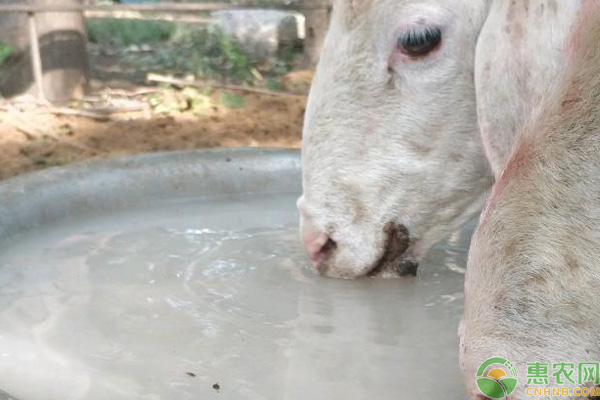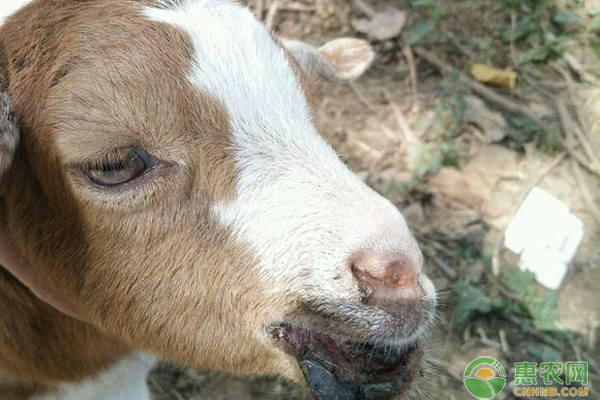Many farmers often face various diseases during the process of raising sheep. Some farmers say that many sheep in their own flocks are full of mouthfuls. I don't know what the reason is. In fact, the sheep can be considered to be infected with pus. Blisters, commonly known as "salary sores", many sheep farms have encountered sheep's mouth sores. For experienced sheep farmers, sheep's mouth sores are not too big a problem. The mortality rate is extremely low in the case of proper treatment. Today, Xiaobian introduces the sheep's mouth sore and its prevention and treatment plan in detail, and hopes to help the majority of sheep farmers.

1, sheep mouth sores symptoms
Sheep's sore is a contagious disease caused by sheep aphthous virus. Both sheep and goats can develop disease. Lambs of 2 to 6 months old are most susceptible, usually in a mass epidemic, and the sheep may suffer from continuous death if they have amputation. for many years.
The incubation period of sheep's mouth sores is generally 4 to 8 days. The affected sheep first appear scattered small erythema on the mouth, upper lip or nose, gradually become papules and small nodules, and then develop into blisters or pustules. Yellow or brown braided hard palate. Some sheep will be benign, the benign rate of sheep is higher than that of goats, and the benign rate of adult sheep is higher than that of lambs. The benign rate of sheep with multiple onset is higher than that of the first disease, such as benign after crusting. After 2 weeks, it will naturally fall off and recover.
In severe cases, the affected part will continue to have papules, blisters, pustules, crusting, and fusion, and even spread around the entire lips and eyelids and auricles, forming a large area of ​​cracks, bleeding and fouling. The crusting is often accompanied by granulation tissue hyperplasia. The crusting is thickening and eventually the entire lip of the sheep is swollen and eversion. A ridge like a mulberry-like bulge affects the normal feeding of the sheep, and the sheep will quickly weaken. Individual severely affected sheep will also have secondary infections, even sepsis, and eventually die from secondary infections.
In addition to the typical lip type, the clinical symptoms of sheep's sore are hoof and vulva, and sometimes mixed infections occur. The hoof type usually produces papules, blisters, and pustules on the skin of the hoof, the hoof or the part of the body. After the rupture, ulcers and scars covered by pus are formed. Vulvar-type cases are rare, and papules, blisters, pustules, and scars occur in the scrotum of the ewe and the ram, and the lactating ewe develop papules, plaques, pustules, and scars on the skin of the breast and nipple. Infected with a lamb sucking breast milk).

2, identification of sheep's mouth disease
Seeing many sheep farmers here will have doubts, such as sheep's mouth inflammation, sheep foot and mouth disease, sheep pox and other diseases may be blisters, how to distinguish from sheep's mouth sores?
(1) Sheep's mouth inflammation. Sheep osteitis is mostly an individual, not contagious. After the onset, the oral mucosa will produce blisters, ulcers, etc., but generally there will be no scarring.
(2) Sheep foot and mouth disease. First of all, there are lesions in the mouth and hoof of the sheep, and the sheep's mouth is mostly a lip lesion. Secondly, there will be symptoms of high fever in the early stage of the foot-and-mouth disease, and the sheep's mouth ulcers will only have symptoms of high fever in the later stage of secondary infection. .
(3) Sheep pox. The pox of sheep pox is mostly systemic and is accompanied by an increase in body temperature.
3, sheep mouth sore treatment
Sheep's mouth sore is actually easier to treat, especially some adult sheep can be naturally tolerated even if they are not treated, and the death of the sheep (mostly in the lambs), mostly due to mouth ulcer pain can not eat properly, appear Nutritional failure or secondary diseases lead to death, so the nutritional intake of the sheep must be guaranteed during treatment.
(1) Adult sheep need to replace soft and chewy forage feed. For some rough hay, add water to soak and soften and then feed the sheep. If the oral ulcer is severe, you can give rice soup or corn soup and other fluids. Sheep provide nutrition; lambs should stop breastfeeding after illness, instead of artificial breastfeeding, one is to prevent lambs from transmitting sheep's mouth sores to the ewes, and secondly, the lambs will reduce or stop sucking due to oral ulcer pain, instead of artificial breastfeeding Lambs provide more nutrients.
(2) soften the knot with sodium salicylate ointment or hydrogen peroxide, then remove the scar and repeatedly wash the wound with 0.1%~0.2% potassium permanganate solution, and finally apply 2% gentian violet solution (purple syrup), iodine glycerol, Ice boric acid, tin powder or oxytetracycline ointment, 1 or 2 times a day until cured. Hoof-type sheep can be immersed in 0.3% potassium permanganate solution for 3~5 minutes, then apply 2% gentian violet solution or oxytetracycline ointment once a day until cured.
(3) Part of the severely affected sheep, 400,000 units of penicillin and 4 to 6 ml of ribavirin injection can be used for injection at the affected points such as the lips, 2 times a day for 2 to 3 days. If necessary, it is necessary to carry out systemic anti-inflammatory treatment for the affected sheep, and infusion supplement nutrition.
(4) When there is a sheep's mouth sore in the flock, no matter whether it is a sheep or a healthy sheep, it is always added to the drinking water to clear the sputum or the electrolysis.

4, sheep mouth preventive measures
The prevention of sheep's mouth sores is relatively difficult, especially in sheep farms where sheep's mouth sore. Because of the strong resistance and survivability of sheep's aphthous virus, sheep's mouth sore may appear for several years. Here are a few prevention programs.
(1) Try not to introduce sheep from sheep's mouth sore area or buy grass and livestock products. The new sheep must be observed and observed for 2~3 weeks. If there is no problem in strict quarantine, it can be mixed into large groups after repeated cleaning and disinfection.
(2) Protect the skin and mucous membrane of the sheep from damage, so as to avoid the infection of the sheep aphthous virus to a certain extent.
(3) The epidemic area of ​​the sheep's mouth and the sheep farm where the sheep's mouth is present can be immunized with the attenuated vaccine of the sheep's mouth sore. The same vaccine as the local strain can be used. In many cases, the vaccine is still inoculated. The vaccine is chosen to be different from the local strain. In addition, the sheep's mouth sore vaccine must be inoculated with oral scratches, that is, scratching the oral mucosa of the sheep with a scratch inoculation needle or a syringe needle, and injecting a vaccine, and other methods of inoculation are difficult to produce immunity. Immunity can be produced about 10 days after inoculation, and the protection period can reach about 1 year.
The above is the content of sheep's mouth sore that has been compiled by Huinong. I hope it will help the majority of sheep farmers!
Half Cut Blue Swimming Crab
Half Cut Blue Swimming Crab,Frozen Swimming Crab,Frozen Cut Crab,Half Cut Crab
ZHEJIANG EVERNEW SEAFOOD CO.,LTD , https://www.evernewseafood.com